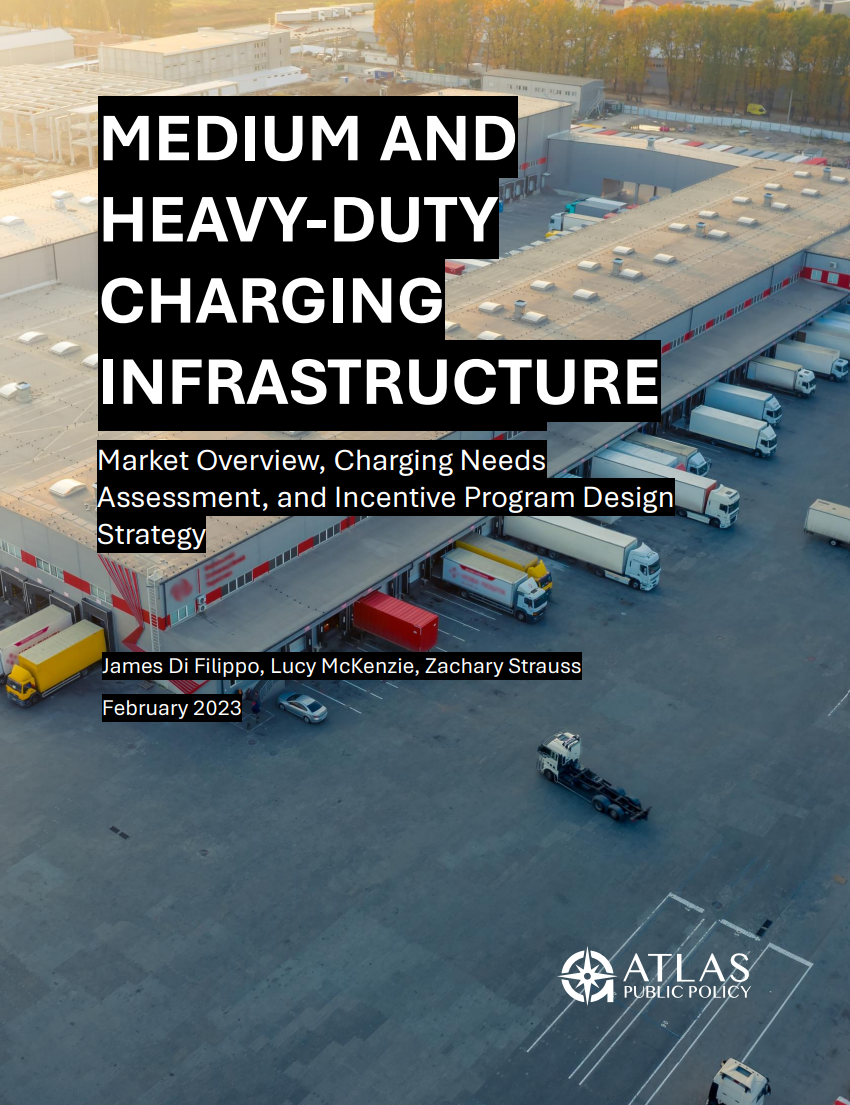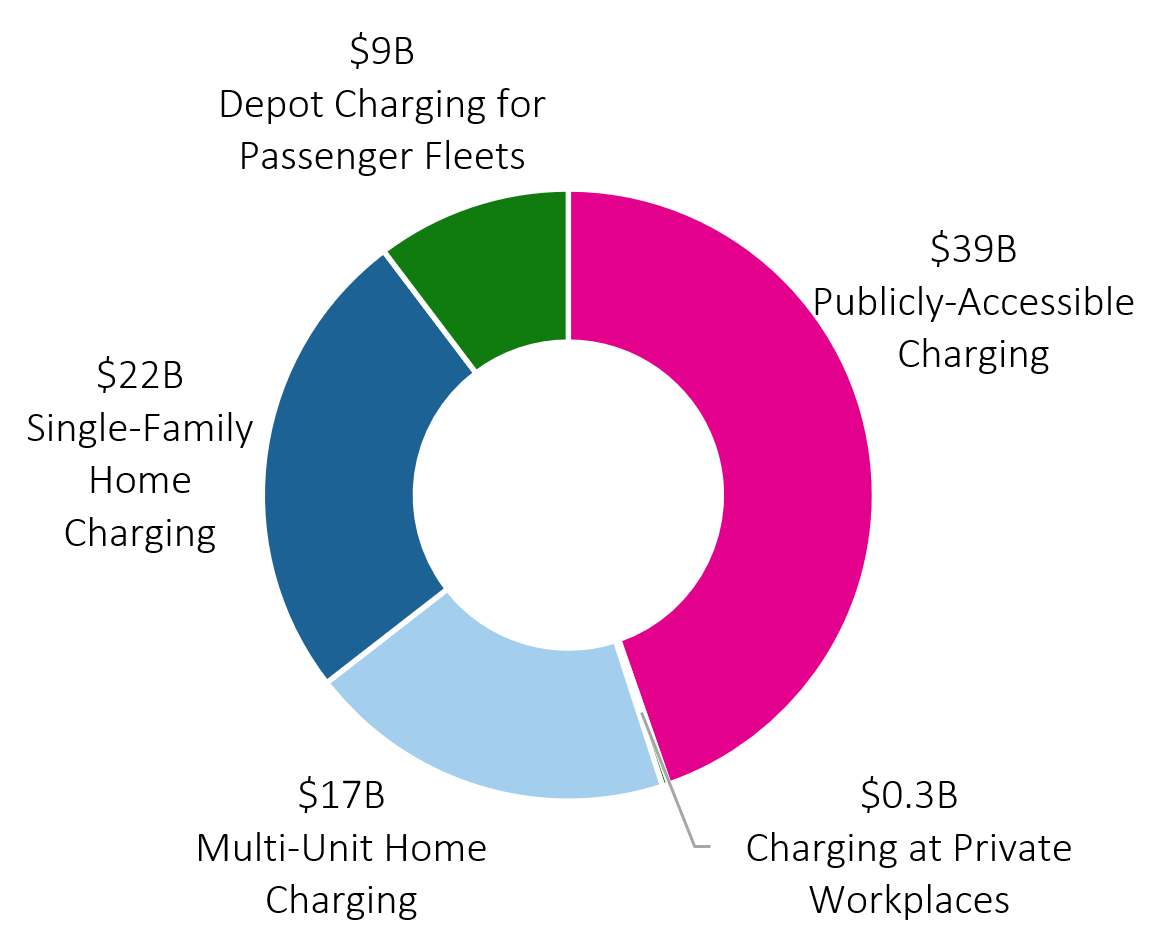Analysis by Atlas Public Policy suggests that the United States will need to commit between $100 and $166 billion in charging infrastructure investments this decade to support an acceleration in electric truck adoption. The wide range in the findings reflects uncertainty in utilization rates for on-road charging, and the required amount of on-road versus depot charging.
Atlas found that to meet 100% electric new medium- and heavy-duty truck sales by the end of 2040 (in line with government and corporate targets), a rapid ramp-up of charging infrastructure will be needed for all truck segments. Needed infrastructure solutions include at-home charging for pickups; depot charging for fleets; and a variety of on-road charging options, including ultra-high powered stations for long-haul trucks.
Atlas’s study estimates needed upfront investments in charging infrastructure that are not expected to be covered by electric utilities. The analysis does not estimate the financial, climate, noise and air pollution, or health benefits of electrification, though these have been shown elsewhere to be substantial. Work by the International Council on Clean Transportation, the National Renewable Energy Lab, Argonne National Lab, and the Luskin Center for Innovation suggests that the total cost of ownership for depot-charging electric trucks, including charging infrastructure, will be cost-competitive with diesel in the near future without incentives.
Increasing utilization of charging ports can substantially reduce investment needs. Utilization at depots can be increased using chargers or software that enable sequenced or simultaneous charging, or by physically moving vehicles to share charging ports. Utilization of on-road chargers can be increased by first targeting charging to high-traffic routes, and by using technology to allow long-haul drivers to reserve electrified parking spaces. Planning for charging stations that can accommodate several vehicle types will also be key — for example, serving large (class 3) pickups and motorhomes at the same sites as light-duty vehicles, and serving multiple medium- and heavy-duty vehicle types at the same site. Policies and incentives that encourage right-sizing of depot equipment can also reduce needed investments.


